Wagon Reviews
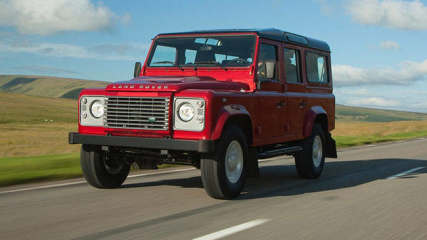
Land Rover Defender 110 2013 Review
Read the article
By Murray Hubbard · 06 Sep 2013
You may find this difficult to believe but the Land Rover Defender has quite a bit in common with the Porsche 911. Land Rover and the Porsche 356 each started life in 1948. Fast forward to 2013 and the latest Land Rover Defender and the Porsche 911 are immediately identifiable from the shapes of those 65 year-old
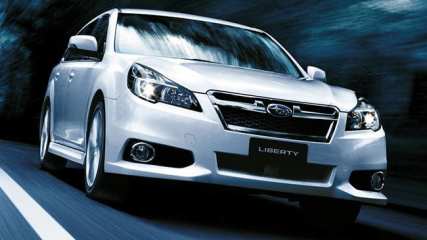
Subaru Liberty Premium 2013 Review
Read the article
By Chris Riley · 05 Sep 2013
It's one thing writing about new technology. It's another thing all together when you see it in action, especially when it saves your bacon. That's what happened as we were in the midst of test driving the latest Subaru Liberty wagon.EYESIGHT TECHNOLOGYLike its name suggests, Subaru's Eyesight provides a second pair of eyes, to keep an eye on things when you're attention might wander. The system is now standard on the four cylinder 2.5-litre Premium model that we were driving. Two small cameras, located near the rear vision mirror mount, monitor the road ahead.When it detects a hazard a number of things happen, not the least of which is the car braking automatically if it thinks there's a risk of collision. It can also brake a lot harder and quicker than any human, which means you have a better chance of avoiding an accident.THE CAROur test vehicle was the four cylinder 2.5i Premium wagon with a CVT auto priced from $41,490. The petrol 2.5-litre four cylinder boxer engine produces slightly more power and torque than before at 127kW and 235Nm, with fuel consumption rated at 8.0 litres/100km (we were getting 8.4).We were supposed to have been driving the entry level model, that does not include Eyesight, but someone pranged it. The gods, it seems, must have been looking out for us?The Liberty gets a full five stars for safety, regardless of Eyesight or not. But the technology takes things to the next level, "actively" seeking out hazards instead of waiting passively to react to them.Along with the addition of Eyesight, the engine and automatic transmission have been upgraded in this latest model. The car comes with leather trim and factory-fitted satellite navigation with a new colour information display.DRIVINGThe Liberty is a very competent car. You can punt it hard without worrying about it letting go, not that most people would do so. It is well engineered and very good dynamically, with high levels of mid corner grip. It does however lack some punch when it comes to pulling out and overtaking. Not that that was the cause of the problem in this case. We were travelling on the inside lane of a two-lane roundabout, distracted momentarily by an elderly relative who needed assistance.Just as we started to leave the roundabout at the second exit, a car travelling in the outside lane decided to continue all the way around, cutting straight across our bow to use some nautical terminology. Quicker than we could react the Liberty braked heavily, scaring the hell out of me because I wasn't expecting it but saving us from certain collision. It happened so fast there wasn't even time to give the offending driver a friendly wave. The Liberty is still not the prettiest car on the road, but it's certainly one of the safest with technology that really works. And it gets you a 20 per cent reduction on your insurance premium. You've got to like that too.VERDICTAny day that technology helps avoid an accident and possible injury or death has got to be a good day.Subaru Liberty Premium wagonPrice: from $41,490Warranty: 3 years, unlimited kmWeight: 1501kgEngine: 2.5-litre 4-cylinder boxer, 127kW/235NmTransmission: CVT auto, AWDThirst: 8.0L/100Km, 185g/km CO2
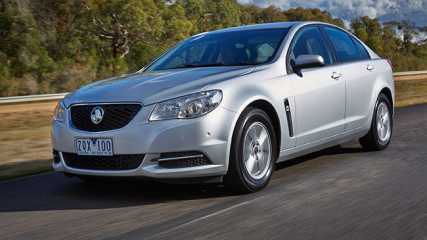
Holden Commodore Evoke 2013 Review
Read the article
By Chris Riley · 04 Sep 2013
This could well be the last Commodore the way the industry is going. Big one-size-fits-all cars have simply lost their relevance and with so many makes and models to chose from these days, the Commodore is never going to sell in the numbers required.It's been spruced up and gets more kit than ever before, but most of it is confined to the more expensive models. Hyundai has proved this is not the way to do business.VALUEThe new Commodore is priced from $34,990 with an auto. LPG takes this figure to $37,490 which means you won't see much change out of $40K by the time it's on the road. Standard equipment includes cloth trim, dual zone air, 16 inch alloys, electric parking brake, auto park assist, front and rear parking sensors and a rear view camera.The MyLink entertainment system is built around a huge 8 inch screen but apart from Pandora and Stitcher internet radio, both of which rely on your smartphone to work it's all a bit ho-hum really. The rest of the stuff like Siri only works if you have an iPhone (our iPod Classic refused to work properly by the way).TECHNOLOGY The LPG system is based on the larger 3.6-litre V6, paired with a 6-speed auto. It produces 180kW of power and 320Nm of torque and is a dedicated system which means the car won't run on petrol. To make room for the larger fuel tank the spare wheel has been replaced by a can of go to reinflate a flat tyre.DESIGNThe look is not as polarising as before. The flared front guards have been trimmed back and the nose is sleeker and more aerodynamic. To prune fuel consumption and to improve performance they have put the car on a diet, with some components replaced with lighter aluminium parts an aluminium bonnet, boot lid, suspension components and instrument panel beam. At 1704kg the LPG model weighs 82kg more than the petrol one.SAFETYFive stars -- but if you believe Holden it's even safer than this, with a swag of new safety systems. Mind you the car badged as a Chevrolet gets seven airbags in the United States, not the six that we get.DRIVINGTo be honest it doesn't feel much different from the previous Commodore. Maybe that's because it sits on the same chassis with the same running gear as before, although 60 per cent of components have been changed. The interior is completely different, but the seats are firm and not that comfortable, especially on a long run. The ride is not as compliant either, thumping where it would have absorbed bumps before.The window switches have been relocated to the doors but the driver's window does not get auto up which is a pain. Fuel consumption has been trimmed to 11.5 litres/100km for the LPG model compared to the 3.0-litre petrol Evoke's 8.3 litres/100km. At the time of going to press the price of LPG was 76.7 cents per litre, while the price of petrol was 152.9 cents a litre.At these prices it will cost you $8.82 to travel 100km on gas or $12.69 for petrol -- a 30 per cent saving. The tank holds 84 litres and we were getting 10.8 litres/100km after about 500km.VERDICTWe're not convinced. The interior feels cheap and the huge computer screen in this model offers Stitcher and Pandora apps - not sign of satnav or the cheaper BringGo system offered in other models.Holden Commodore Evoke LPGPrice: from $37,490Warranty: 3 years, 1 year or 100,000km roadside assistEngine: 3.6-litre 6-cylinder, 180kW/320NmTransmission: 5-speed auto, RWDThirst: 11.5L/100Km, CO2 185g/kmKerb weight: 1704kg

Audi RS6 Avant 2013 Review
Read the article
By Malcolm Flynn · 30 Jul 2013
Let’s get the numbers out of the way first: 412kW, 700Nm, 3.9 seconds and -- if you tick the right options box -- 305km/h. Those are the big stats on the RS6 that, when it arrives locally in October, will be the most powerful Audi in the line-up.And that’s with a brick-like wagon body – the only choice we get in the new RS6 – so you can shift furniture with it too. Moving house has never been so much fun.VALUEAt $225,000, it’s nearly triple the price of the entry $81,800 A6 2.0 TFSI Avant, but you’d need to spend $366,900 on the 386kW/530Nm R8 V10 Coupe to better the RS6’s acceleration with a 3.6 second 0-100km/h figure.The RS6’s closest rival is the $265,145 430kW/800Nm Mercedes CLS 63 AMG S Shooting Brake, but you might also glance at the sedan-only $311,500 423kW/680Nm BMW M6 Gran Coupe with the new Competition Package and its $229,900 M5 mechanical twin.And the RS6 all-wheel drivetrain trounces that group for acceleration, hitting 100km in that 3.9 seconds against the Merc’s 4.2 and the Beemers’ 4.1 and 4.2. And against their prices, it’s a value buy, if you’re at that end of the market.It’s lavishly equipped with everything you could want under a powered panoramic glass roof, but in true Audi fashion there are plenty of chances to spend more. The standard Bose audio not enough? Splash $12,000 on some Bang & Olufsen kit. Fancy stronger anchors? Grab the options pack with carbon ceramic brakes, coil springs with adaptive shocks, variable ratio steering and that 305km/h speed limiter extension for $25,840 – or about the price of a VW Polo GTI.DESIGNIn RS tradition, the wheel arches are pumped – and house 21-inch monsters -- the twin exhausts are firehose-sized and the gaping front maw looks ready to munch on any supercar pretenders that appear in the angry glare of full-LED headlights.The cabin carries five in the menacing luxury of honeycomb-quilted black leather, set off by hardcore carbon fibre and aluminium fittings. But it will also freight a hefty 1680 litres of cargo with the back seats folded, and tow 2100kg -- mocking the triviality of conventional supercars.ENGINE AND TRANSMISSIONThe newcomer has lost 14kW but gained 50Nm over the last RS6 we saw here three years ago with a twin-turbo 5.0 litre V10. But the return brings a similarly twin-boosted 4.0-litre V8 that shaves 0.7 secs off the 100km/h sprint, and 30 per cent off the fuel burn. It claims 9.8L/100km – helped by a 100kg drop in weight, stop-start and cylinder deactivation (with active engine mounts to counter the sleeping cylinders).So yes, it may be less powerful, but it’s lighter, quicker and far more fuel-efficient -- and without an electric motor or high-tech diesel in sight. The twin-turbos nestle within the engine’s ‘V’ (like the Beemer M5/M6) for responsiveness and thermal efficiency, which also gets a leg-up from nine individual radiators and six separate coolant pumps. Direct injection meticulously blends boosted air and fuel to the point where the RS6’s 700Nm torque peak is available all the way across a battle-ready 1750-5500rpm.Unlike most current performance Audis, the transmission is not a dual-clutch S-tronic unit, but rather a version of the ZF eight-speed torque converter unit used elsewhere by Audi, and a litany of other manufacturers to great effect. In RS6 guise, it’s paired with the same array of shift modes, manual selection and paddle shifters we’ve come to expect from modern performance autos. The quattro all-wheel drive system splits drive 40/60 front-rear under normal conditions, but can send up to 70 per cent to either end when needed, thanks to the standard sports differential.SAFETYThe RS6 backs up its performance potential with a long list of safety features, including dual front airbags, side airbags front and rear, and full-length curtain airbags. There’s also ABS, traction and stability control, with the $10,375 packaged option of pedestrian-detecting night vision, active lane and side assist, active cruise control and driver alert, and a self-parking system.DRIVINGOur Northern Territory test route had the lure of the current highest legal speed in the land: 130km/h -- barely half the RS6’s top speed capability in standard guise, but it was the closest thing to a German autobahn on offer. Therefore, the usually annoying stops for driver swaps, photography and bladder draining gave us several chances to legally storm from 0-130km/h, revelling in the ease in which the RS6 picks up its skirts and gets going.Even from idle, the engine ignites as though it were triple its capacity and dumps its outputs into the 285 section rubber on each corner. Stomp and steer performance in the extreme. We went out of our way to give the 390mm six-piston standard brakes a good guernsey from 130km/h too, and they were well up to the task of stopping the 2010kg RS6 from those speeds. Australian-spec RS6s come standard with the sports exhaust that’s still optional in Europe. Tootling about at carpark speeds produces a guttural purr, warning of its presence. Accelerate, and it erupts into a solid V8 blast, then settles to a subdued rumble at cruising speeds. On overrun, the exhaust cackle is satisfyingly naughty.At a steady 130km/h, the engine trickles along in the dash-indicated four cylinder mode, and reawakens the other four cylinders with no perceptible delay. With the Audi Drive Select system set on full comfort, our test car’s standard adaptive air suspension disguised that we were riding on the 30 profile rubber on some very remote outback roads, despite the reminder of regular cattle grids. As aggressive and Lambo-like as the seats may appear, they’re still broad and gentle enough to cosset real humans over long distances. Flicking the Drive Select over to Dynamic tightens up the steering assistance and throttle response, stiffens the suspension, and incites more aggressive shift behaviour. This shifts the RS6’s personality to proper aggro, but it was pointless on our relatively straight and flat journey across the outback. The dynamic settings would no doubt be a real hoot over a mountain pass, when you could dip into the RS6’s potential for personality change.VERDICTIf there’s one word to describe the RS6, its 'easy.' It’s very easy on the eye, easy to extract its monstrous performance potential, and easy to drive every day, over long distances. For Audi’s fastest RS so far to cloak its brutality in such smooth civility is a double-edged indulgence, and a sharp one at that. But with our nanny speed limits, you’re missing out on the true edge of the RS6’s engineering. AUDI RS6 AVANTPrice: $225,000Warranty: 3 years/unlimited, roadside assistCapped servicing: NoService interval: 12mths/15,000kmSafety: 10 airbags, ABS, ESC, EBD, TCCrash rating: TBCEngine: 4-litre V8 twin-turbo petrol, 412kW/700NmTransmission: 8-spd auto; constant AWDThirst: 9.8L/100km; 98RON; 229g/km CO2Dimensions: 5.0m (L), 1.9m (W), 1.5m (H)Weight: 2010kgSpare: spacesaver
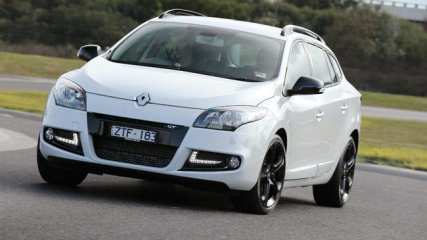
Renault Megane GT 220 2013 review
Read the article
By Ewan Kennedy · 27 Jul 2013
Renault is determined to be a big player amongst a host of European marques currently being imported to Australia. The French maker used to be huge in this country, building cars here for many years, and would like to return to its days of being a mainstream player downunder.Using the time honoured method of increasing sales, Renault Australia has cut prices on its biggest selling model, the Megane. It has greatly expanded the number of models on offer and, best of all, has introduced a high-performance station wagon.RANGE AND PRICESThe Megane GT 220 Sport wagon is a slightly detuned version of one of our favourite high-performance cars - the Megane RS 265 coupe. While the 265 is a semi-track model for the very serious driver, the 220 is aimed at the person looking for a family transport with a healthy dose of driving excitement.By the way the numbers 265 and 220 refer to the peak output of the engines in horsepower. The French, who invented the metric system, don’t use it when measuring power outputs of engines, preferring to use the imperial units of horsepower. May we cynically suggest that’s because 265 and 220 are bigger number than 195 and 162 (the power in kilowatts for the powerplants)?Renault Megane wagon is sold in Dynamique level specification with 16-inch alloys, dual-zone climate control, roof rails, and rear parking sensors. It can be ordered with a petrol or diesel engine, but only with an automatic transmission in Australia.The Megane CC (Coupe-Cabriolet) with its folding hard-top is now offered in three models, previously there was just a single, rather expensive, one. In a new entry level specification the Megane CC begins at just $36,990, making it bargain priced in its class.For those looking for more, there’s a Renault Sport designed GT-Line as a package on the Megane hatch, station wagon and Coupe-Cabriolet. This has a sportier front bumper design, a honeycomb grill and boomerang-shaped LED daytime running lights. Megane GT-Line is available in a signature Malta Blue colour, sometimes called French racing blue. Inside, the GT-Line Megane has sport seats and steering wheel.There’s also a standard wagon with good load carrying capacity. As well as back seats that fold flat, the front passenger seat can also fold flat. With the front seat down there’s a load length of 2550 mm.Renault Megane hatch comes in a new entry level specification, Expression. This has a recommended retail price of just $20,990 with a manual gearbox. Interestingly, the Megane Expression automatic has an rrp of $22,990 which is the same price as the outgoing manual model.DRIVE IMPRESSIONSWe spent a great couple of hours driving the GT 220 wagon in the hills behind Brisbane and were impressed by the engine responding with a minimum of lag, the endless torque provided once it was on song and the overall handling and ride package. As it’s less fierce than the Megane 265 coupe the wagon will make a competent daily driver.The GT-Line has harder suspension than the standard models. We found this to be rather firm, and created quite a bit of tyre noise on the rough and ready Aussie backroads we used on some sections of our drive program. So it might be best to try it for yourself before falling in love with the appearance changes.VERDICTA fully imported European machine for the price of an Asian car? That’s likely to spark a lot of buyer interest in the new and expanded Renault Megane range.
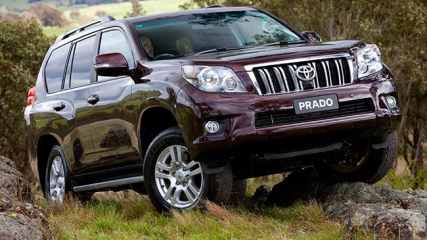
Toyota Land Cruiser Prado 2013 review
Read the article
By Alistair Kennedy · 15 Jul 2013
Back in July 1996 Sydney residents looking skywards would have seen a skywriting aeroplane spelling out the letters P-R-A-D-O. The name would no doubt have puzzled the vast majority of those who saw it, unaware that it was part of Toyota Australia's launch of a new, slightly smaller version of its long-established
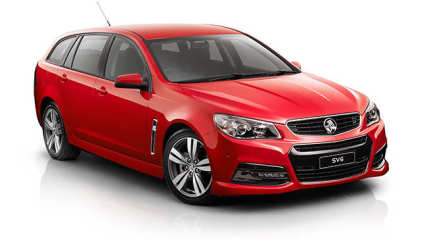
Holden Commodore SV6 Sportwagon 2013 review
Read the article
By Ewan Kennedy · 08 Jul 2013
It somehow seemed appropriate that our first extended VF Commodore test in our home area should be a station wagon, or a Sportwagon to use Holden’s title. Commodore was king of the family car market for 15 years before many buyers moved to either smaller cars or medium SUVs. So it’s likely the big VF station wagons could draw those who strayed from Commodore back into the fold again.Many external styling changes to the VF distinguish it from the VE it supersedes. The new front gives it a stockier look, partly because the bonnet has been raised to incorporate pedestrian protection, but also to fall into the global General Motors design theme.While the VF sedan is significantly different at the rear, the wagon (and ute) remain much the same as before, principally to save design dollars. Tellingly, at no time during our road test that covered over 600 kilometres did any other drivers stare at the Sportwagon’s rump and recognise it as a new Commodore.Changes to the interior are extensive and give the VF Commodore a fresh, modern look. The centrepiece is the large, easy-to-read 8-inch colour touchscreen with well-spaced controls that are big enough to avoid the dreaded push-two-buttons-at-once hassles.Visibility outwards is still marred by the huge A-pillars that we have been complaining about since the earliest VE Commodores. Some alterations have been made to the trim to try and cure this. Slimming the underlying metal was going to be expensive so we will have to live with the need to move our heads around to negate the blind spots created by the wide pillars.At least the damn-fool handbrake that was so irritating in the VE has been replaced by a small, sophisticated electric unit. Although it’s built on the same platform as the VE Commodore, around 60 per cent of chassis components have been either modified or replaced. An overall weight reduction of almost 40kg has been achieved, mainly through the use of an aluminium bonnet, and sedan versions gain an aluminuim bootlid.The SV6 comes with a 3.6-litre six-cylinder engine with 210kW of power and 350Nm of torque and sends drive to the rear wheels via a six-speed automatic transmission (or six-speed manual on sedan and Utes).It gets a five star ANCAP crash safety rating with electronic stability control, front and rear park assist, traction control, electronic brake force distribution, hill start assist and blind spot alert.There’s something distinctly Aussie about the way the VF Commodore feels on the road, particularly in country driving. It lopes along with a minimum of fuss, makes light of coarse-chip surfaces that can rattle even the most expensive Europeans, and copes with corrugated dirt as though it’s barely there. Out onto the open road the interior of the Commodore is noticeably quieter than before and there’s a real feeling of luxury not unlike that of cars that cost tens of thousands more.The 3.6-litre V6 on our test SV6 Commodore wagon was happy to sit at minimum revs thanks to the efficiency of the six-speed automatic transmission. The engine and transmission are both responsive and communicate with one another to give pleasing amounts of torque at all times. However, the 3.6 is still not as smooth as that of similar units used in many competitors. It’s certainly not as harsh as when first introduced almost a decade ago, but it really should be better.Performance is strong, yet fuel consumption has been reduced markedly compared to that of the already good VE Commodore. Expect the 3.6 V6 to use about seven to nine litres per hundred kilometres when cruising in the country. And around nine to eleven litres when driven sensibly in suburban areas.Handling is excellent with good feedback through the steering wheel and the suspension system. The new electric power steering (EPS) gives a sharp feel that’s all but indistinguishable from that of the old hydraulic assistance used in all Commodores till now. EPS is there primarily as a fuel save because it only takes power from the engine when it’s needed, not all the time as when a hydraulic pump is running permanently.
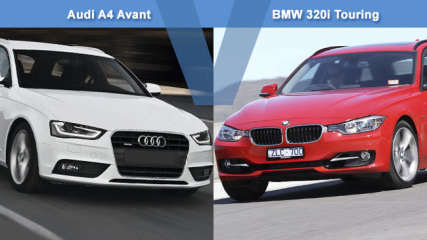
Audi A4 Avant 2.0 vs BMW 320i Touring
Read the article
By Stuart Martin · 05 Jul 2013
Audi A4 Avant 2.0 and BMW 320i Touring go head-to-head in this comparative review.

Used Ford Falcon review: 1998-2012
Read the article
By Ewan Kennedy · 05 Jul 2013
Ford's Falcon has slipped from the minds of many new-car buyers in recent years, resulting in the sad news that production will cease late in 2016. However, the iconic Falcon has long been a favourite with used-car buyers and there’s no sign of that changing anytime soon.To some extent we blame the demise of the Falcon on over adventurous styling. The radical shape of the AU was years ahead of its time when it was introduced in September 1998 and many conservative buyers didn’t like it.Facelifts to create the AU Falcon Series II in April 2000 and to the AU III in November 2001 lifted sales slightly. In September 2002 a major facelift to produce the BA Falcon started to put the Falcon back on track in new sales. The BA Falcon was upgraded to the BF Falcon in October 2005.The introduction of the rather conservative FG-series Falcon saw sales slip again, and history shows that Ford Australia never did recover after that.Falcons have seating for five adults, though four makes more sense because rear-wheel drive means the transmission tunnel takes up a lot of footroom in the centre-rear position. Legroom and headroom are ample for all but the largest adults. Some find the relatively steep slope of the roof in the AU to BF Falcons make it awkward to get in and out; naturally the back seat of the wagon doesn’t have this hassle.Comfort is very good and passengers can step out of a Falcon after a trip of hundreds of kilometres still feeling fresh and relaxed.The boot in the sedan is rather shallow in the older models and the slope of the bootlid on the AU reduces its practicality. It’s easy to load thanks to a good-sized opening. The BA Falcon is better, though still on the shallow side.Falcon station wagons are great load carriers as they are built on a longer wheelbase than the sedan so they have a long, wide, practical cargo area. The rear end of the BA is virtually identical to that of the older AU. Ford chose not to do an FG variant of the wagon. Instead, it created a Series III BF model to sell alongside the FG sedans. It wasn’t a success and was discontinued in 2010.Handling is surprisingly good for a car of this size and mass. You wouldn’t call it agile, but Falcons hold on when cornering at speeds far above those likely to be attempted by most drivers.Ford's six-cylinder engines all have a capacity of 4.0 litres but come in several formats, including one with a turbocharger. An interesting variant on the six-cylinder is a dedicated LPG engine. Very common in taxis, but less so in private cars (except in Victoria) this engine is all but indistinguishable from a petrol unit to drive. It’s quite a bit thirstier than the petrol so fuel range suffers.The standard AU six-cylinder unit is good enough, but the BA’s six-cylinder is noticeably smoother and offers even better performance.Ford fitted a 5.0-litre V8 to the AU, but it didn’t have a lot more performance than the six-cylinder units and was on the thirsty side. Much better were the BA bent eights: there was a choice of two, both with a capacity of 5.4 litres, one with a single-cam cylinder head, the other with a twin-cam setup.A powerful four-cylinder engine, tagged the EcoBoost gave us arguably the best Falcon ever, thanks to excellent performance and nimble handling, the latter due to the lighter weight of the smaller engine. Buyers in this market segment can be on the conservative side and they stayed away from the EcoBoost in droves.Automatics were all four-speed units until the launch of the BF, when a sophisticated six-speed ZF unit was installed. The ZF was originally only fitted in the topline variants, with the introduction of the FG Falcon all received the six-speed auto, with the exception of the LPG power models, which stuck with the old four-speed unit until the launch of the new-design LPG unit in July 2011.Manual gearboxes are rare and probably best avoided in all but the sporting XR6 and XR8 as they can affect resale value. The manual was a five-speed until the BF series, when a six-speed was installed.Prices for spare parts, servicing and repairs are very reasonable and there are Ford dealers just about everywhere in Australia. Most spare parts for the Falcons covered here are readily available, although a few bits on some older cars may have to come from a wrecker.These are very simple cars to work on, with plenty of underbonnet and undercar space. We recommend having a workshop manual at your elbow before starting the work.Insurance prices are generally very reasonable and premiums for the everyday models are invariably at the lower end of the scale. It will generally cost more to cover a V8 Falcon than a straight-six, and more expensive for a turbo six.WHAT TO LOOK FORRust is far less of a problem in these newer Falcons than old ones. To be on the safe side, check the door lower corners, door sill panels, mudguards and bootlid. If you do find serious rust the car may have been badly repaired after a crash.Many thousands of used Falcons will have been taxis at some time in their life. Be wary of one running on dedicated LPG; while these are quite common in Victoria, they are rare anywhere else in Australia. Signs of an ex-taxi are vinyl, rather than cloth, upholstery, severe wear both inside and out, holes where signs and a taximeter have been removed, and possibly a paint respray.Engine wear is indicated by a reluctance to start and by smoke from the exhaust and/or oil filler cap when the engine is revved.Four-speed automatics can cause problems on hard-driven cars, especially the older models. Check they change gears cleanly and don't hunt up and down through the ratios. Be suspicious of any automatic that’s slow at going into gear from Neutral or Park.Listen for a whining differential when driving at around 60 to 90km/h.Check the cabin for damage caused by wild kids. In station wagons have a good look at the load area for signs of commercial useCAR BUYING TIPBeware ex-taxis: they are run hard and often not driven in a sympathetic manner.

Mercedes-Benz E-Class 2013 review
Read the article
By Philip King · 03 Jul 2013
A warning symbol has just appeared in the car I'm driving and it's one I've never seen before. It's an image of a steering wheel with a driver's hands coloured alert red. Pretty soon, a tone will sound.It's a relatively undramatic event in the singing-ringing cabins of modern luxury cars, which warn you before you've had a chance to belt-up that your pre-flight checks are incomplete or for any number of potential hazards.But this one is a landmark. I'm on a freeway heading out of Melbourne sitting on 100km/h and negotiating its gentle curves and obedient drivers. The car is steering itself.Mercedes new E-Class can, within tight limits, drive without you. The symbol is telling me that I've just exceeded the “letting go of the wheel” limit. That happens after only a few seconds. But I have another go, and another.’It's part of a system Mercedes calls Intelligent Drive and it heralds a new era of car technology that will eventually mean -- I hope -- that you won't need to take a train if you want to read The Australian on the way to work.The technology to accelerate, brake and steer a vehicle autonomously is the subject of feverish work across the industry and beyond, as the well-publicised Google project shows.Once steering and these systems are electronically assisted, as they are in almost every car now, it's not difficult to make a car that can drive itself in, say, an empty car park. We already have automatic braking, assisted counter-steering and hundreds of other software interventions when we're behind the wheel. A computer can control a car reliably and consistently in a way no human can.This E-Class, a heavy overhaul of the current model, relies on a greater array of sensors than previous Mercedes and especially two cameras mounted high on the windscreen which scan the surrounds. They build a 3D map of an area up to 50m in front and have a range 10 times that. Software adds up all these inputs and steers for you.In one sense, this is just the next step. But it's a biggy. One small beep for a car, one giant leap for vehicle-kind. The next S-Class, the model up from the E and the traditional techno flag-bearer for the brand, will take this even further. One limit to these systems is their ability to interpret complex environments, such as a busy main street. Humans are better at thinking outside the box.The other limit is regulation, although rules are already being relaxed in some US states and in Europe. The E-Class is core Mercedes, used in Europe in more rudimentary forms as taxis and as executive expresses in their performance guises. It comes as a sedan, wagon, coupe and cabriolet with a bewildering variety of engines that bear little, if any, relation to the badge on the back. An E250, for example, does not run a 2.5-litre engine or have any meaningful dimension that corresponds.The luxury market has been typified by a few trends recently, with Mercedes -- in this market at least -- often taking a lead. These include the shift to smaller capacity turbocharged engines, higher levels of standard equipment or price cuts or both, and simplified line-ups.Even a simplified E-Class line-up is complex. The rollout of this upgrade begins with the most popular four-cylinder models, which fit new generation 2.0-litre petrol and 2.1-litre diesel engines. The list of technical and luxury fitments is longer but the starting price remains at $80k minus change. All but diesel wagon begin below $100k.If you do choose to leave your hands on the wheel, then even the bottom-rung E delivers the core driving virtues of the brand. Handling is quietly assured and smoothly capable. The smallest four-cylinders are worth a look but step up to an E250 is driving enjoyment is in your DNA. For those times when you're not reading the paper.Three further variants are the way, two of which also introduce new drivelines. The E300 Hybrid combines the 150kW four-cylinder diesel with a 19kW electric motor to achieve average fuel economy of 4.3 litres per 100km. That makes it the most fuel efficient large luxury car available and Mercedes' first hybrid in this market. It arrives in July, as sedan only, for $108,900 plus on-road costs.The previous E350 V6 and E500 V8 variants have been dropped, replaced a single V6. Thanks to turbocharging, though, the E400's 245kW 3.0-litre unit is good for a 5.9 second sprint to 100km/h. In other words, it's the match of the previous V8 on performance but with much improved fuel economy of 8.0 litres per 100km, even better for the sedan. It starts below the previous E350 at $128,900 while the wagon is an additional $7800.The sole V8 offered is now the E63 from Mercedes's captive tuning operation AMG. The performance pack, previously an option, becomes standard-fit and there's an S badge to denote this. That means 430kW from its 5.5-litre turbocharged V8 and a higher price of entry, at $249,900.Even without the Intelligent Drive feature, which is standard on all but the base petrol and diesel, you won't mistake this facelifted car for the previous one. Not least of the improvements is to styling, which has been a Mercedes weakness of late. Some of the heavy-handed lines of the previous car have gone without sacrificing aggression. It's the first Benz in ages that doesn't hurt your eyeballs.The racier Avantgarde style face, which dispenses with the gunsight bonnet ornament in favour of an enormous badge on the grille, becomes standard.The cabin is more welcoming with ambient lighting, a cute clock and, in base models, acres of fake leather that seems to be harder than ever to tell from the real thing. Even the E200/E220 CDI get a large control screen with maps, apps and Google, voice recognition and other goodies such as gearshift paddles that were extra until recently. There's still plenty of options to bump up the price, of course, including a sunroof, heated seats and premium audio.




